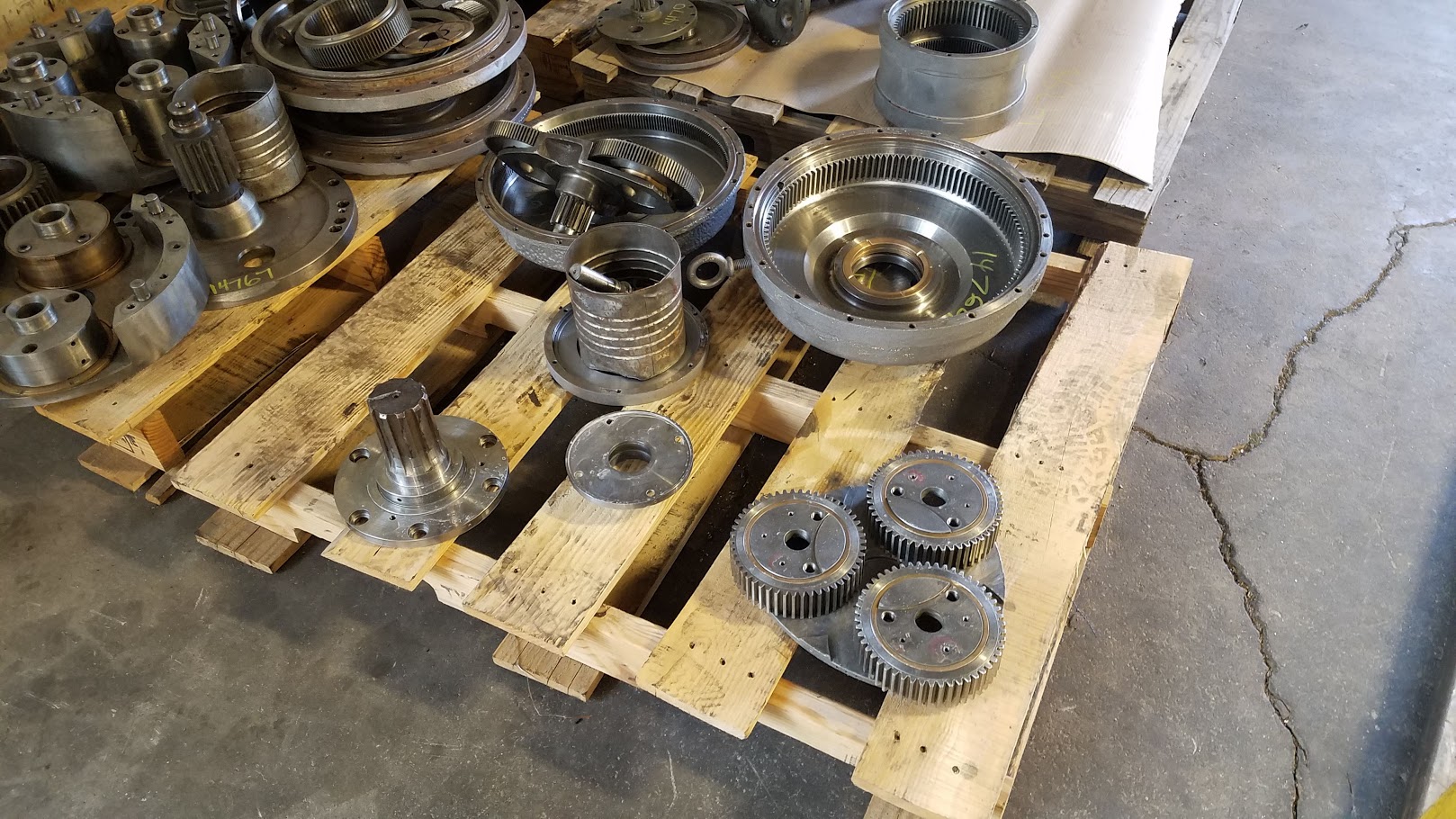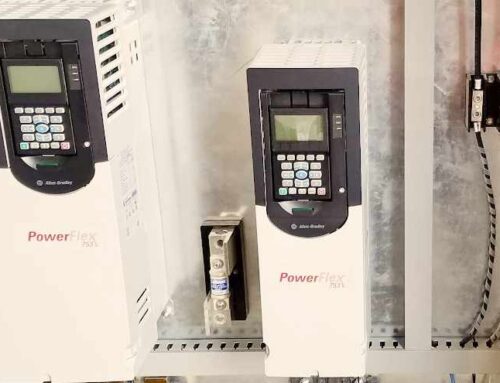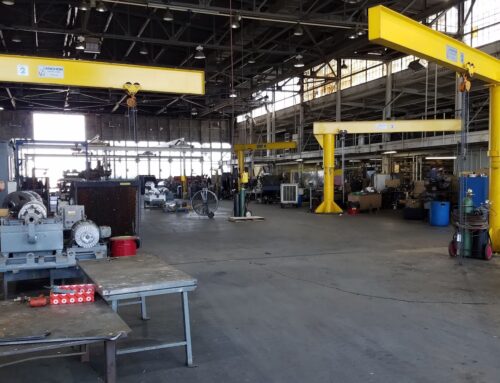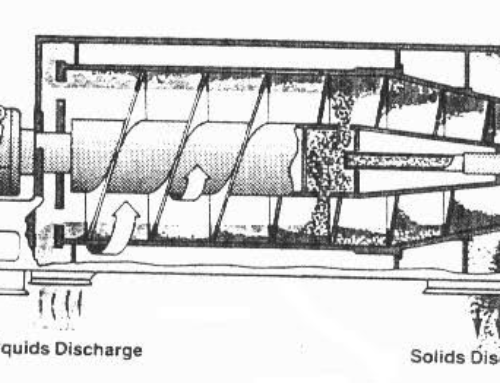A frequently asked question is “What is the life span of a decanter (or any type) centrifuge?” Answer: 100 years, or really, forever – under certain conditions. No manufacturer of centrifuges has a “retirement age” or “scrap it” age on their centrifuges. This is because there is no metal fatigue problem in the centrifuge metallic structure due merely to use. Everyone knows that if you bend a piece of metal back and forth enough times it will break. This does not happen to centrifuges during normal rotation. Then, a person might ask, why are centrifuges ever taken out of service or scrapped? For several reasons, as discussed below. An interesting side note here is that the current (4/2018) Sharples P-3400 rental test decanter owned by Kyte Centrifuge Sales was manufactured in 1965. It just completed a 2 year rental on a hot process separation and only required one bearing change midway through the rental period (Improper greasing of the internal bearings was the cause.).
Centrifuges may be scrapped or taken out of service due to:
1) Corrosive attack. The feed slurry fed to a centrifuge must not be corrosive to the metal making up the rotating bowl or any other part. Most decanters are manufactured in 316 stainless steel or a close variation of 316 with more strength under rotation (317, Duplex). Care should be taken in matching the centrifuge material of construction to the corrosive properties of the feed slurry, solids, and vapors. The objective is to have zero corrosion on the centrifuge metal. Other centrifuge materials of construction can be carbon steel (for mining or high oil content applications such as meat industry rendering), 304 and other stainless steels, several grades of Hastelloy, titanium, and one or two other exotic metals. Any special order metal centrifuges are extremely expensive compared to the standard metals.
2) Erosive attack. The three (3) major wearing parts of a decanter type centrifuge are the feed ports, conveyor flight edges, and cake discharge ports. Severely abrasive feed slurries can also attack the stainless of the feed zone inside the conveyor hub, or the abrasives containing cake solids can cut through the stainless cover at the point of cake discharge. The feed ports are normally protected with bolt on liners with an inner core of carbide or ceramic. The cake ports also have bolt (or glued) on liners with carbide surfaces. The conveyor flights can be protected with carbide or ceramic tiles, and welded stellite (weldable carbide matrix) all machined to the proper shape. The feed zone can be protected with a welded stellite surface covering, ceramic paste, or liners of rubber or plastics. The impact line in the cover and, to some extent, the lower casing can be lined with stellite, rubber, or other materials. With proper protection any erosive attack will never reach the relatively soft stainless steel which might affect the integrity of the decanter. Periodically the wear protection is inspected and replaced as needed. Properly performed, this protection will keep the decanter operational for many decades.
3) Obsolescence: Improvements in the separation efficiency of decanters continues to develop as the manufacturers conduct experimental research with that goal. This can be in the area of improved separation efficiency or savings in energy consumption. At this point of time (2018) it is tempting to say that the major improvements (for separation efficiency) have already occurred and that any improvements in the future will be incremental only; but, one never knows for sure. The three major improvements in basic decanter design were all invented or developed by Sharples Centrifuge personnel in the 1970s. These are the deep pool design, the axial flow design, and the BD (Biological Design) disc design. Dr. Allen “Charlie” Lee first conceived of the BD design while brain storming with Bob Missimer (Sharples Process Lab Test Technician) sitting in a 4 desk office at Sharples in Warminster, Pa. I was sitting at one of the desks and overheard the conversation. Missimer was astounded at the idea and immediately understood the concept. This was in about 1971. Since then every major manufacturer makes use of the BD design. The understanding of the benefits of increasing the depth of the pond and having an axial flow of the feed slurry down the bowl in decanters were realized by Sharples at about the same time (early 70’s) and the “deep pool axial flow” PM series of decanters were introduced. These were especially beneficial in the municipal waste sludge industry. More on this subject in another article.
4) Plant expansion can result in the existing decanters being too small for the new larger capacity needed. Rather than line up many small decanters management may decide to purchase one or two or even several larger decanters and retire the smaller ones. The smaller ones are sometimes used at another part of the process, or at another plant owned by the same company. Sometimes they are sold on the surplus market and sometimes scrapped. There is usually a large income benefit by selling the decanters on the surplus market versus scrapping them.
5) Sometimes the plant process will change making the decanters unneeded or ineffective for the new separation.
6) Sometimes new technology in filter design, and a good filter salesman, will cause the decanters to be replaced with filters. The final result can be better, or not.
7) Occasionally large companies or governmental agencies will decide to replace the decanters that are 20 or 30 years old due to company policy on machine age or the availability of funds for new equipment (like tax dollars). We also have seen almost unused decanters of this age put up for sale. The municipality or other type company did not want them but was forced to accept them by higher authorities, then they never ran them beyond a short start up period, if they ran them at all.
To conclude, the manufacturing date of a decanter centrifuge is irrelevant to its’ value for future use. Very fine decanter centrifuges, of whatever age, reach the surplus market all the time. With a thorough reconditioning and new controls they can be purchased for about half price of new, with a life expectancy of… 100 years!




